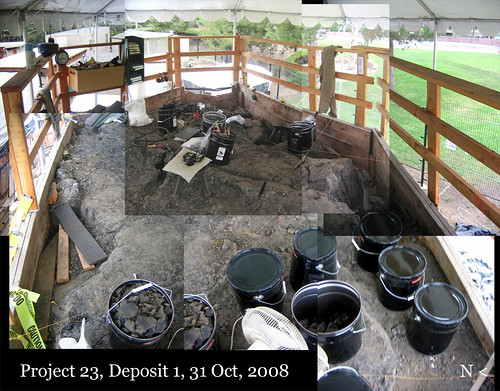No weekly update last week because we were in beautiful El Golfo de Santa Clara in Sonora, Mexico collecting fossils! We camped in the desert for five days; collected numerous ice age (but older than RLB) fossils; watched many beautiful sunsets; and returned home to the rather sobering realization that excavating at the La Brea Tar Pits for one day leaves one even grimier than camping in the desert (without showering!) for five. Gross, right? Anyway...
This is El Golfo:
And this is us:
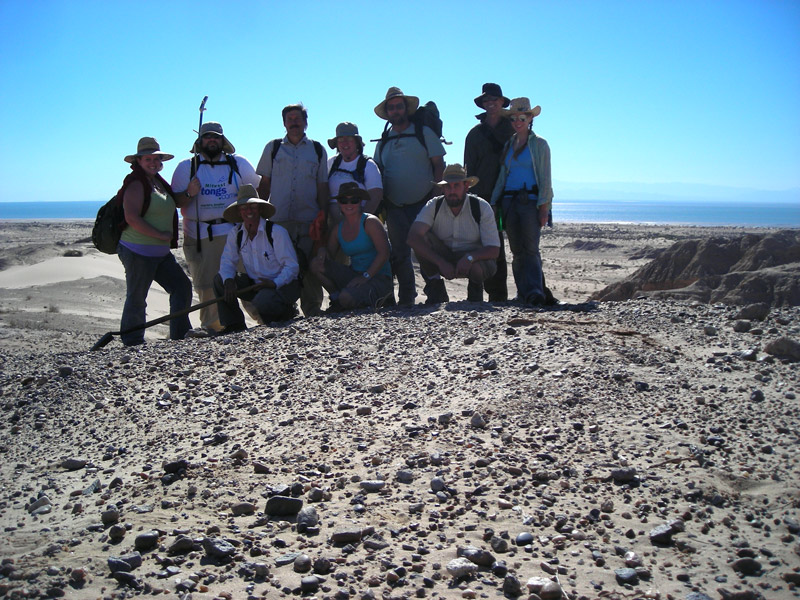
From left to right, standing: Laura Tewksbury, Trevor Valle, Robert Predmore, Melody Weaver, Chris Shaw, Michael Wilson, Andie Thomer. Kneeling: Fred Croxen, Aisling Farrell, Ryan Long
El Golfo de Santa Clara is a magical land, where cars glide along the ocean:

And boats wind up on the street:
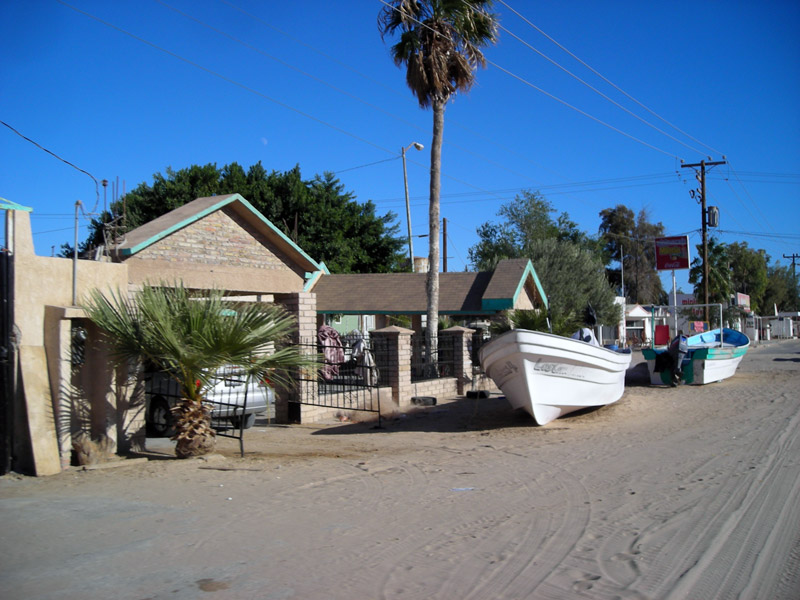
And fossils are NOT in tar pits! Oh no! They are lying on the ground, for everyone to see! See all the little rocks in the picture below?
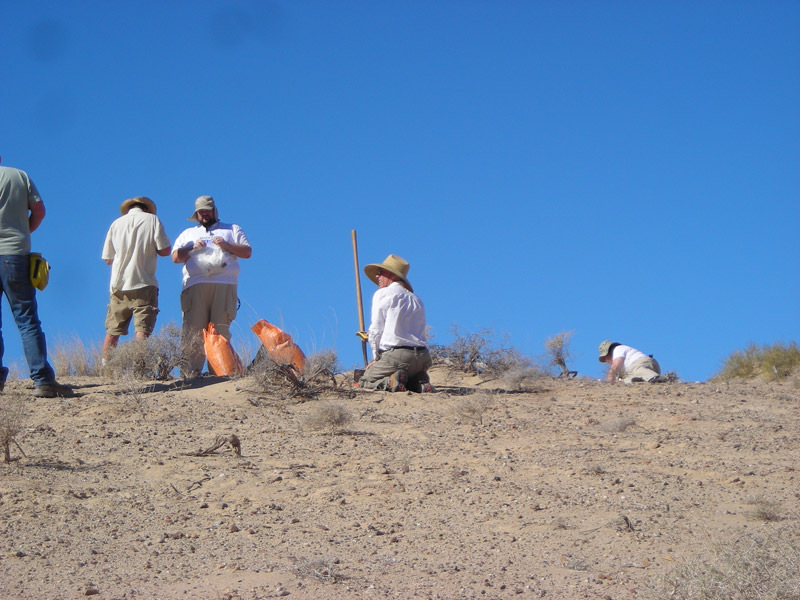
A good number of those are actually very small fossils. Geologist Fred Croxen (in the center, with the jaunty hat) is bagging up rocks and dirt from the surface, which will then be sifted through in mesh screens:
and eventually sorted through under a microscope for the same kinds of microfossils that we find here at Rancho La Brea. The fossils from El Golfo are considerably older than those here -- 1 to 1.5 million years old, compared to our measly 10 to 40 thousand -- but nevertheless contain many similar species as our tar pits.
More soon!
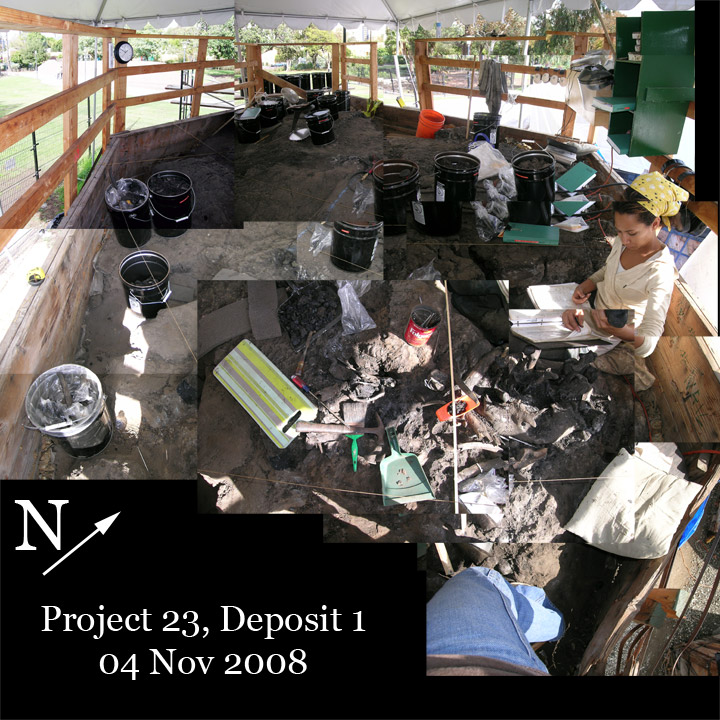 it's Photo Collage Madness 2008! Click through to our flickr.com page for highlights and more photos.
it's Photo Collage Madness 2008! Click through to our flickr.com page for highlights and more photos.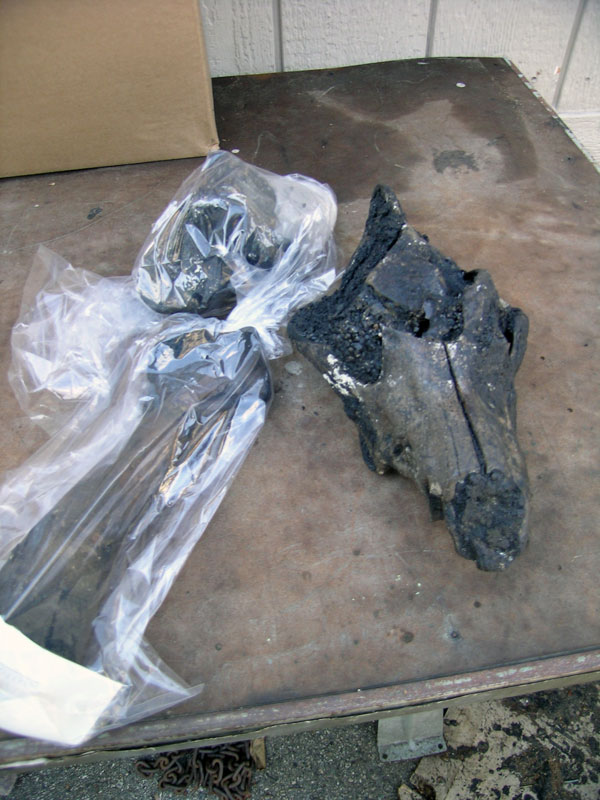 l to r: Saber-toothed cat humerus, giant ground sloth vertebra, dire wolf skull.
l to r: Saber-toothed cat humerus, giant ground sloth vertebra, dire wolf skull.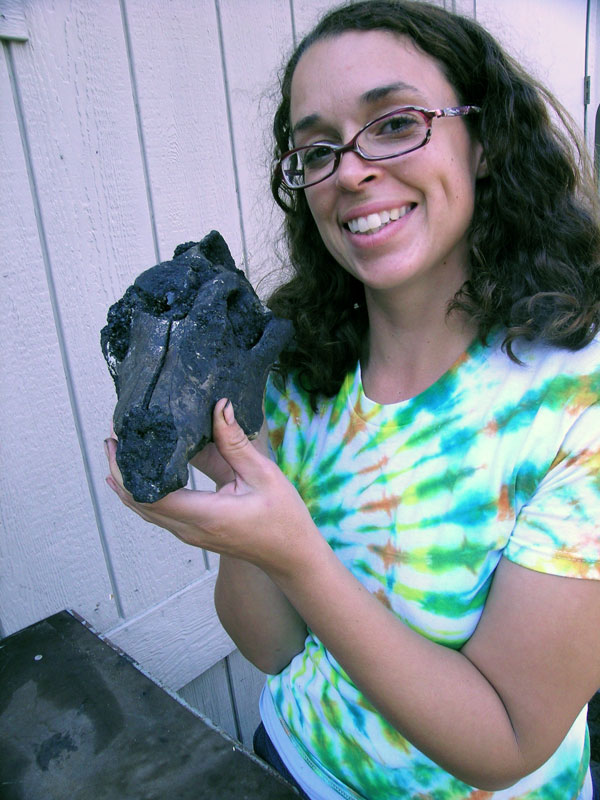
 You can see (compared to the adult normal vertebra in the pic) that one side of the bone thinks it is a normal vertebra and the other thinks it is part of the sacrum. Furthermore, the neural spine is both off-center and angled wierd. I thought this one was pretty neato, but Michelle is the excavator, excuse me, excavatrix, who is really into pathologies.
You can see (compared to the adult normal vertebra in the pic) that one side of the bone thinks it is a normal vertebra and the other thinks it is part of the sacrum. Furthermore, the neural spine is both off-center and angled wierd. I thought this one was pretty neato, but Michelle is the excavator, excuse me, excavatrix, who is really into pathologies..jpg)





